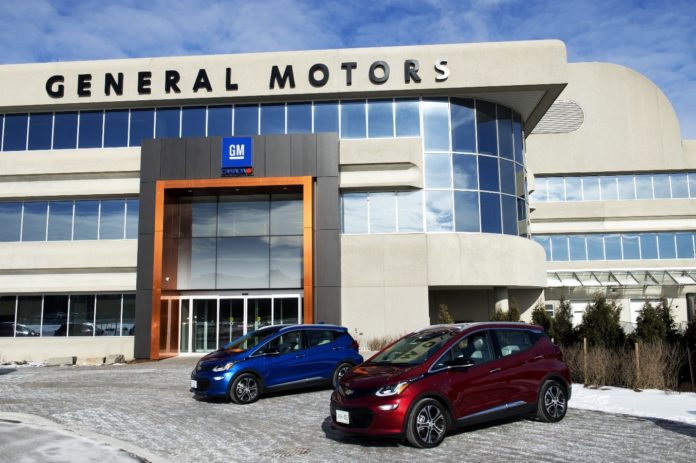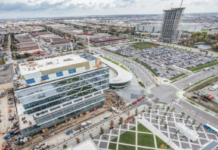York Region boasts Canada’s largest auto parts manufacturing cluster:
100 rms with 16,000 employees.
The Region is also the Canadian head office location of six global automotive firms, including Magna International, North America’s largest auto parts manufacturer and Honda Canada, the first Japanese automaker to produce vehicles in Canada.
There is also a tremendous amount of innovation underway in York, including Magna’s corporate R&D centre and the newly opened Canadian Technical Centre (CTC) Markham Campus of GM focusing on autonomous vehicles and software development.
The growing automotive cluster in York Region and the broader GTA is a key sector for custom automation solutions provider Falcon Hi Tec International in Concord.
“We are literally surrounded by Magna.We do a lot of direct work with automotive suppliers such as assembly equipment and testing and verification equipment to checking parts before they are shipped to the OEM,” said Falcon general manager Peter Lacza.
Falcon designs, engineers, builds and integrates automation solutions, advanced manufacturing systems, robotic cells, turnkey controls, and custom machinery. It’s particularly specialized at custom assembly and test automation, robotic applications, material handling and welding systems for the automotive sector.
The company focuses on customers within an hour’s radius of the GTA but also serves some automotive companies in Mexico and the U.S, said Lacza.
“We are working to get into the Michigan corridor and the dollar is bringing back some interest. We’re also working to get into the OEMs in Oshawa and Oakville. Right now, Tier 1, 2 and 3 suppliers are our focus,” he said.
“There are a lot of Tier 1 and 2 parts being made here. People don’t realize how deep the sector goes in Ontario.”
Markham, already home to more than 1,100 high-tech and life sciences companies, now hosts a crucial research and development facility for GM.The Canadian Technical Centre (CTC) Markham Campus, which opened last fall, is a 150,000-square-foot facility featuring test labs for end-to-end software development.
“The Markham Campus adds to GM’s focus on advanced mobility innovation including the development of next generation autonomous vehicle software and controls, active safety and vehicle dynamics systems, and infotainment and connected vehicle technologies,” said Brian Tossan, director of the Canadian Technical Centre, GM Canada.
GM also has research facilities in Oshawa,Waterloo and its cold-weather testing site in Kapuskasing.
“We chose Markham for our fourth engineering facility because Markham is the tech capital of Canada, so it made natural sense. Additionally, there are over 4,300 ICT firms inYork Region and being a part of this dense cluster offers opportunities to look for collaborations and partnerships,” said Tossan.
“Markham is also host to many multinationals, like GM Canada, so they were able to facilitate us in getting up and running.We also selected Markham for its proximity to Toronto, one of the most vibrant cities in North America, and to the Toronto-Kitchener-Waterloo innovation corridor. Being close to these locations gives us great access to top, world-renowned universities and first-class research institutions and to great future talent.”
GM has moved into the first floor of its Markham Campus, while the second and third floors are under construction. About 150 software engineers and developers are working at the Markham site, with new hires coming on board every week, says Tossan.
“We also have many active job openings available as we look to hire hundreds of engineers over the next few years as part of our mandate to expand our Canadian engineering base to reach a total of approximately 1,000 positions.”
Research and development is also underway at Honda Canada’s Markham head office.
The $100-million Honda “campus”, opened in May 2010, houses three interconnected buildings, including a four-storey energy-efficient LEED gold building, a technical centre for R&D, engineering and training, and a one- storey parts distribution centre.
“The campus relocation to Markham allowed Honda the opportunity for greater economic and operational efficiencies, while expanding our economic contribution to Canada,” said Barry Holt, executive vice president and COO, Honda Canada Inc.
“Honda decided on a municipality that complemented our business philosophy – speed to market, focus on customer service and driven by innovative and sustainable solutions.”
Other factors cited for moving to Markham, include: access to roads and markets, government incentive and corporate taxes, proximity of support services and supplier locations, land availability, cost of living and labour rates.
York Region’s strong automotive sector also includes Honda supplier TS Tech Canada, the sole provider of seats for Civics and CR-Vs produced in Alliston, according to a presentation created when TS Tech Canada won a manufacturer of the year award
from the Newmarket Chamber of Commerce in 2015.
TS Tech employs about 18,000 people worldwide and more than 800 in Newmarket.
York Region is also playing a big role in the production of two of the most exciting cars ever produced.
The first Ford GT supercar roared off the production line at Multimatic Inc.’s facility in Markham in December. The carbon fibre sports car has a 600-horsepower engine and a starting price tag of about US $450,000.
Multimatic is an automotive engineering and racing company and manufactures suspension components, light-weight body structures and other parts for Ford and other auto makers.
Ford received 6,500 applications for the first 500 GTs. It will take two years for Multimatic to produce that many, at a pace of one a day at full production.
Multimatic will also produce the lightweight carbon-fibre monocell for the new Aston Martin AM-RB 001 hypercar, a collaboration between the British luxury car company and the Red Bull F1 racing team.
The first of 150 road versions are expected to be built in 2019 and will likely cost more than $3 million.
















